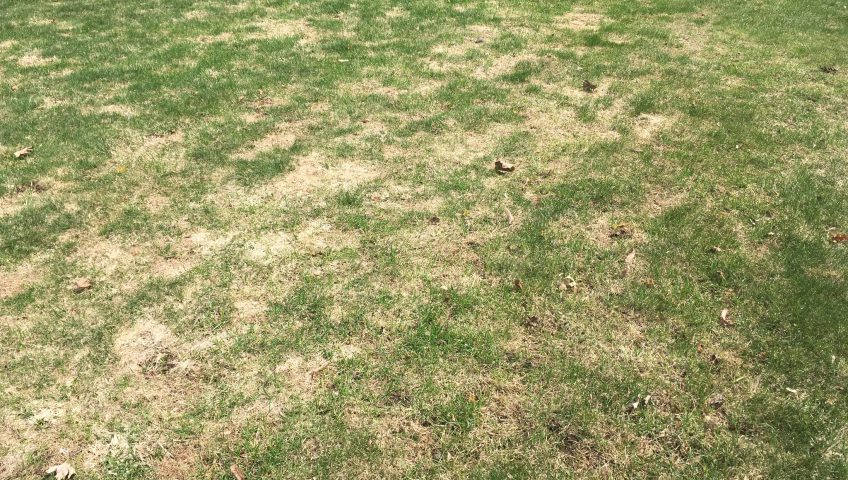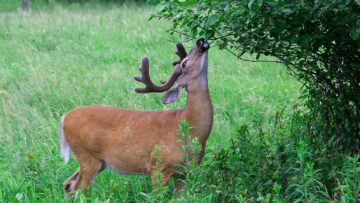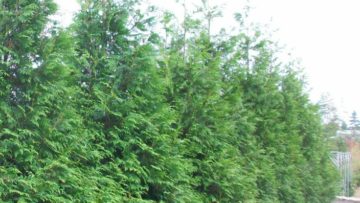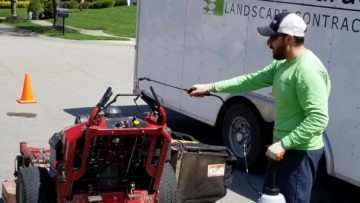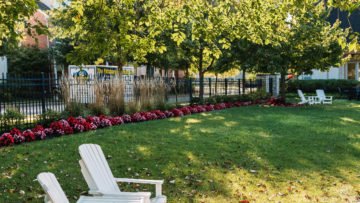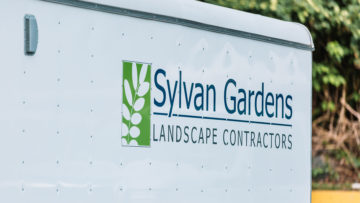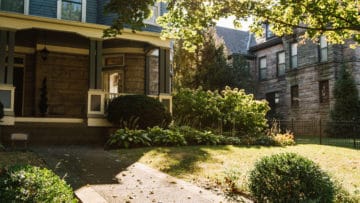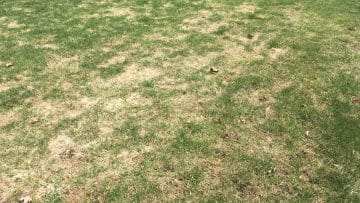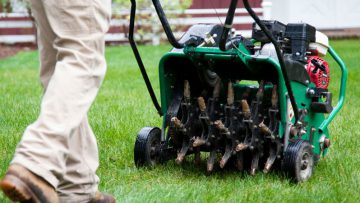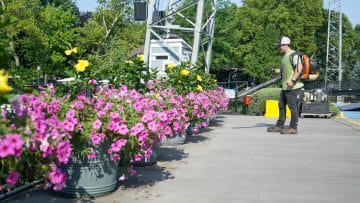In a previous post, we explored the most common fall turf care processes.
Core aeration, dethatching and slice-seeding are all great ways to buffer your lawn. While these processes can promote turf health, they aren’t a cure for all problems. Correctly identifying common turf pests & diseases is the critical first step in total lawn care.
A range of factors can create stresses on your lawn, but can you tell one issue from another? Here, we’ll review some problems Pittsburgh homeowners are likely to find in their yards, and how fall turf care programs can help to fight back against summer turf stress.
Environmental Issues
Like so many problems in the landscape, Pittsburgh’s unusually heavy spring rainfall is a burden on your turf. This may run counter to the image of lawn sprinklers soaking your grass day after day. However, our record-breaking rainy seasons have made their mark on all parts of the landscape.
That damage is usually seen in washout and compaction of turf areas. Low-lying areas may have also remained damp for longer than normal, making healthy turf growth difficult. This season’s quick shift from record-breaking rain to typical summer drought also put stresses on lawns and gardens across the region.
Abundant rainfall in the first half of this year may have made your lawn look incredible well into summer. However, that heavy water also fosters ideal conditions for generations of pests and diseases that can wreak havoc once the weather dries up.
Standing water and intense washout may require specific water management plans. However, many lawn stresses can be addressed with custom turf care programs.
Read More: See our post on fall turf care basics & benefits
Pests & Disease
Some turf issues might not be noticeable now, while most grass is dormant. But as we head into fall and your lawn recovers, problem areas will present themselves as healthy grass becomes green around them.
With fall approaching, your lawn is nearly ready to break dormancy. When it does, keep a sharp eye out for these common pests and problems.
Dollar Spot
Abundant early rainfall and hot, humid summer conditions create perfect conditions for Dollar Spot. A fungal problem, Dollar Spot is common in most varieties of turf and thrives in periods of heavier rainfall. Patchy brown spots throughout the lawn may look like normal dormant turf in summer. If these areas do not recover in the fall, you may have this common lawn fungus.
Quick Fix: There’s no controlling rainfall. But in summer months, any lawn irrigation should take place in the mornings, so that lawns can fully dry out by day’s end. Persistently wet conditions will promote dollar spot and other fungal diseases.
Sod Webworm & Chinch Bug
Surface-level insects that like to feed on the crown of the grass blades, sod webworm and chinch bugs are very common pests in the landscape. Their damage may go undetected early in the season, especially in lawns that are well-fertilized and heavily watered. However, their damage may be mistaken for dormancy, as the bugs become most active as lawns go quiet for the summer.
Quick Fix: Monitor your watering levels and check the turf for consistent density. Chinch bugs in particular like patchy grass in the hottest months of summer. Removing thatch and keeping your lawn healthy removes their favored environment.
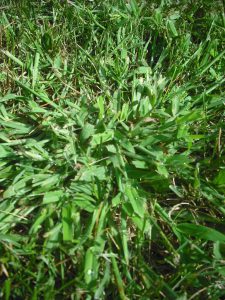
Grubs
Even in healthy-looking lawns, grubs may become active below the surface and their damage will only show after it’s too late. These common pests burrow beneath the surface and feed on the roots of your turf. Large patches of dead grass that pull up easily are a sure sign of grub damage.
Quick Fix: Grub worms require chemical pesticide treatment. Integrated Pest Management strategies provide the greatest benefit, and you should understand any chemicals you put on your lawn – especially for those homes with pets and small children. However you attack them, attack grubs in late summer and early fall, when grub feeding is at its height.
Common Weeds
Nutsedge
These fast-growing weeds look like grass, but like a weed, they will grow in nearly any location. Nutsedge generally likes areas with excessive moisture and compacted soil. It should be no surprise, then, that nutsedge continues to thrive while Pittsburgh receives record spring rainfalls.
Quick Fix: Unfortunately, there is no quick fix. Nutsedge does not respond to preventative treatments and must be treated with selective herbicides once established. As with all problem pests, a dense, healthy lawn is the best preventative measure to keep nutsedge from taking over.
Crabgrass
Much like nutsedge, crabgrass is an ubiquitous warm-weather weed. Active in late June and July, crabgrass responds to some pre-emergent herbicides. Even when treated, crabgrass may still grow along paved surfaces, where temperatures are highest.
Quick Fix: Maintaining turf density is key. Crabgrass can be treated with some broadleaf herbicide treatments, but will naturally die back with the first frost of the year.
Are you interested in fall turf care for your lawn?
Are turf problems getting in the way of your perfect lawn? The window to prepare your yard for a great growing season lies in just a few weeks each fall, and the time to schedule your fall turf care program is now.
Request your free consultation today. We can provide soil sample analyses and mechanical turf care programs to help you make the most of your green space.
